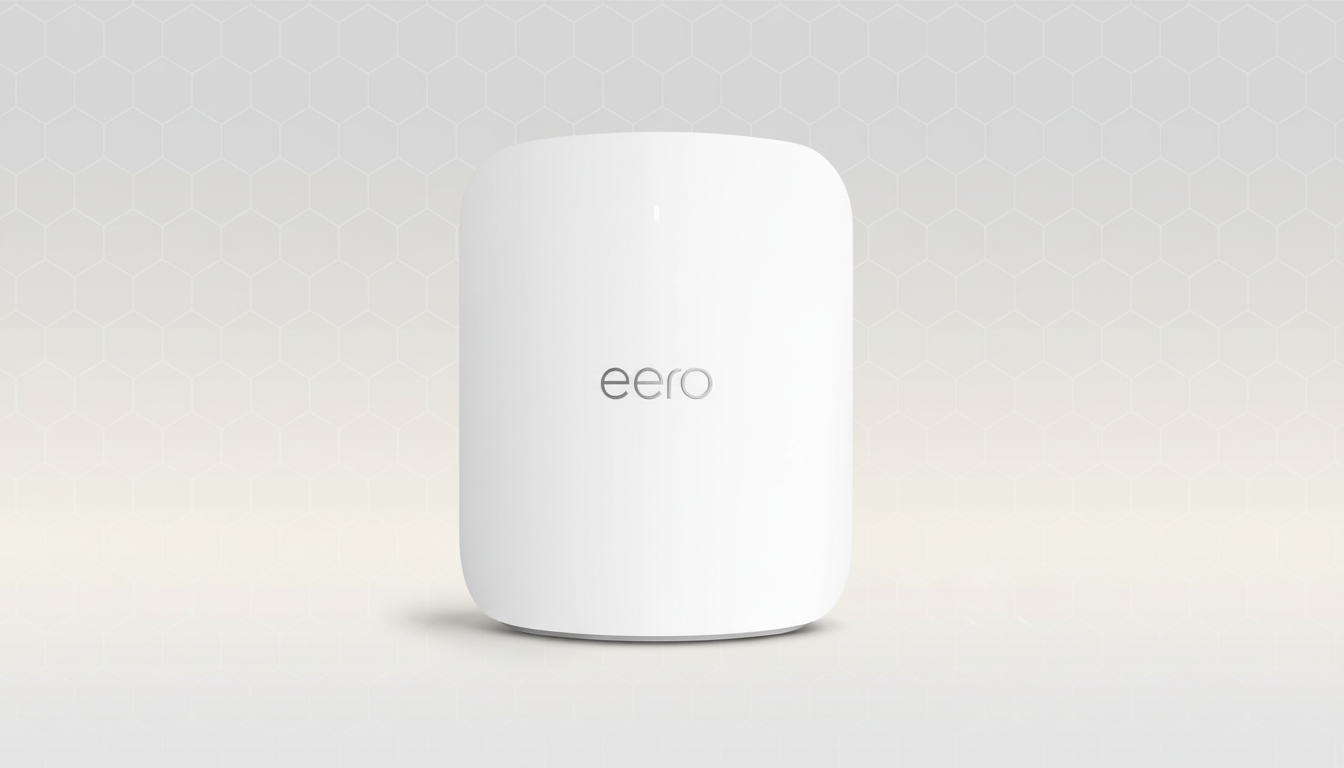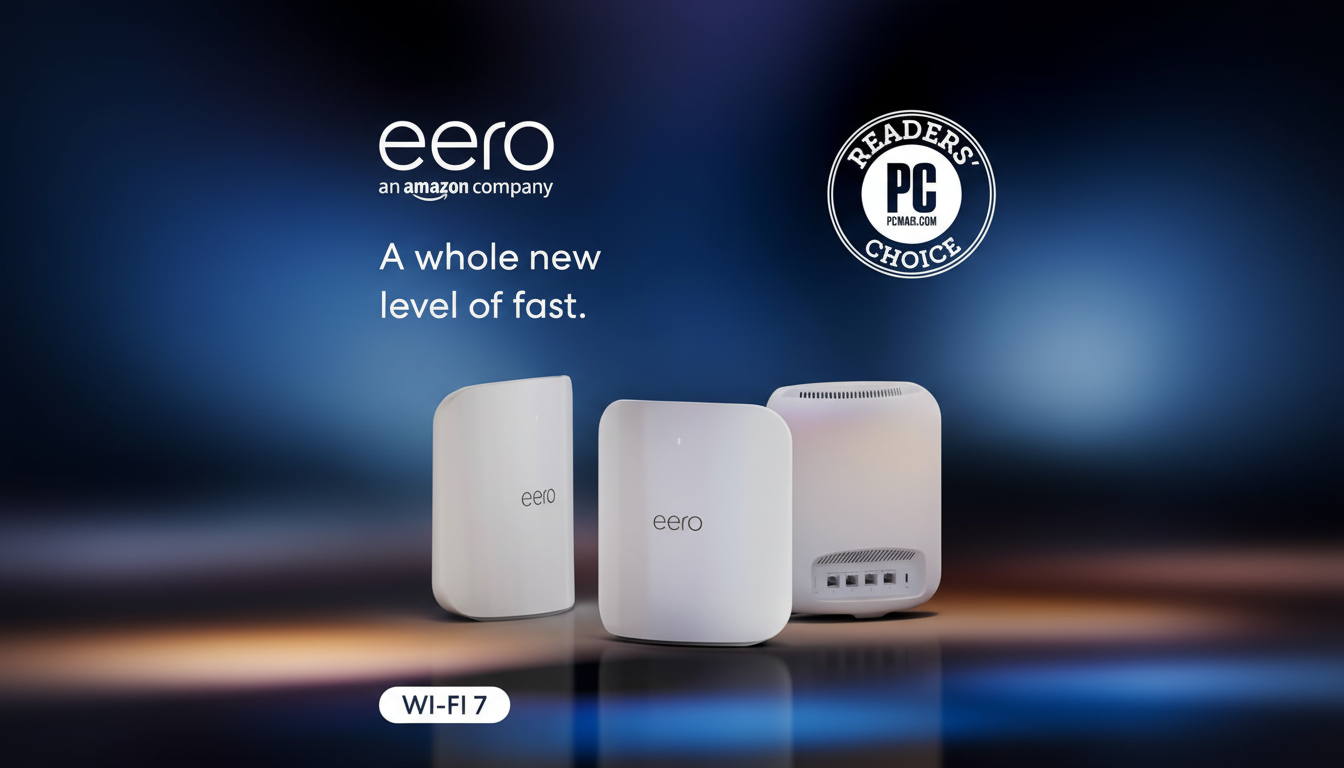The flagship Eero Max 7 mesh router just saw a rare $180 discount, bringing Wi‑Fi 7 performance within reach for more households. For a product that typically sells at a premium, a 30 percent markdown meaningfully changes the value equation for anyone eyeing multi‑gig connectivity, 6GHz spectrum, and a simple mesh setup for large homes.
Why this deal stands out for Eero Max 7 shoppers
The Eero Max 7 is at the top of Amazon’s mesh lineup and priced accordingly due to its bleeding‑edge radios, multi‑gig Ethernet, and smart‑home integrations. A $180 cut is substantial in a category where discounts are rarely larger than a coupon code. If you’ve been holding off because most Wi‑Fi 7 routers’ final pricing exceeds an entry‑level laptop, this is one of the more compelling chances to upgrade without serious feature compromises.
- Why this deal stands out for Eero Max 7 shoppers
- What Wi‑Fi 7 brings to real homes with Eero Max 7
- Hardware highlights that matter on the Eero Max 7
- How it compares in the current mesh Wi‑Fi landscape
- Who benefits and how to plan your network and purchase
- Bottom line: a future‑ready mesh at a more attainable price

What Wi‑Fi 7 brings to real homes with Eero Max 7
Wi‑Fi 7 expands on Wi‑Fi 6/6E with 320MHz channel support on the 6GHz band, higher‑order 4K‑QAM modulation, and Multi‑Link Operation (MLO). MLO is a mechanism whereby a single client can connect to multiple radios on the same AP or different APs simultaneously.
- 320MHz channel support on the 6GHz band
- Higher‑order 4K‑QAM modulation
- Multi‑Link Operation (MLO) for multi‑radio links
According to the Wi‑Fi Alliance, these combine to increase peak throughput and reduce latency and jitter in the real world. You benefit in everyday tasks like cloud gaming, high‑bitrate 4K streaming, and ultra‑crowded multi‑user environments.
The 6GHz band is the star: it’s cleaner and less congested than 2.4GHz and 5GHz, so compatible devices can sustain faster, more consistent links. Even if many of your gadgets are still Wi‑Fi 5 or 6, a Wi‑Fi 7 mesh can stabilize the whole network by freeing up capacity and handling simultaneous traffic more efficiently.
Hardware highlights that matter on the Eero Max 7
The Eero Max 7 is a tri‑band system covering 2.4GHz, 5GHz, and 6GHz, with radios designed to move heavy data without choking on backhaul. It also includes multi‑gig Ethernet with 10Gb ports, enabling you to build a wired backhaul between nodes or feed a multi‑gig fiber connection without bottlenecks. For most, that’s a practical path to consistent multi‑gig performance room to room for power users with no other upgrades.
Smart‑home users get a little bonus: Eero’s platform doubles as a hub and has a Zigbee radio and Thread Border Router capabilities for Matter devices. This can reduce the number of extra bridges you need to keep shelves tidy and your system responsive.

How it compares in the current mesh Wi‑Fi landscape
Compared to other premium Wi‑Fi 7 meshes like Orbi’s Orbi 970 and TP‑Link’s Deco BE series, Eero’s pitch is simplicity and stability. Orbi’s quad‑band designs and aggressive dedicated backhaul sit at the top tier, but they are priced much higher. Deco is known for being cheaper overall, although app and long‑term software polish differ dramatically between models. Eero’s easy app‑based setup, reliable roaming, frequent firmware updates, and streamlined ecosystem are the best features.
If you plan to wire nodes, Eero Max 7’s multi‑gig ports can provide a robust foundation. In wireless‑only deployments, the 6GHz band frequently serves as a quick backhaul when nodes are placed where they can easily see each other, according to Eero representatives. Any of these choices result in significant advantages over older Wi‑Fi 5/6 meshes, particularly in the context of multistory residences.
Who benefits and how to plan your network and purchase
This discount makes the most sense if you have or want gigabit‑plus internet, or if you have dozens of devices. According to research from Deloitte’s Connectivity and Mobile Trends report, the average US home now has more than 20 connected devices, a level that can benefit from modern scheduling, larger spectrum, and quicker backhaul. Gamers, creative specialists who are sending large files to NAS storage, and households with numerous 4K streams will be the chief beneficiaries.
Wi‑Fi 7‑compatible clients, such as the most recent flagship Android phones, high‑end laptops equipped with Intel’s BE‑series Wi‑Fi 7 modules, and new motherboards from major PC suppliers, are quickly increasing in number. Even older equipment benefits from the Max 7’s superior radios and more intelligent traffic management.
Confirm if the discount is limited to a single router, a two‑pack, or a three‑pack; coverage requirements escalate rapidly in larger residences. If your ISP provides premium internet service tiers such as 2Gbps or 5Gbps, such as AT&T Fiber, Google Fiber, Frontier, or Ziply, organize your topology to make the most of the Max 7’s multi‑gig ports and consider wired backhaul for optimal stability. As history has shown, stock and pricing can shift at any time due to limited‑time promotions.
Bottom line: a future‑ready mesh at a more attainable price
Bottom line, with $180 off, the Eero Max 7 goes from aspirational to attainable, bringing a forward‑looking mesh that’s set for multi‑gig internet, a burgeoning 6GHz device ecosystem, and a sprawling smart‑home.

